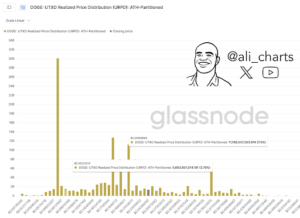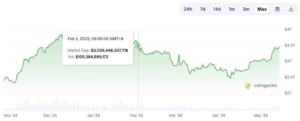Is It Time To Buy Dogecoin Or XRP? Expert Says Dump Old Coins For FloppyPepe’s 44,000% ROI Potential

Old coins like Dogecoin (DOGE) and XRP once ruled the hype, with Dogecoin (DOGE) riding on memes and XRP fighting through legal storms. But lately, both seem to be losing their momentum, and investors are seeking new opportunities for higher ROI.
FloppyPepe (FPPE) is a new meme coin that’s generating buzz for its low market cap and the promise of massive returns. With predictions of a 44,000% ROI, Experts say the best decision now is to leave the old coins and seize the opportunity in the meme coin’s presale.
Early Access Meets Real Utility: The FloppyPepe (FPPE) Setup
FloppyPepe (FPPE) is still in its early stage, launching at a presale price of $0.0000002 per token, making it highly accessible to new investors. Its low market cap allows even small capital to move the price significantly, unlike old coins like Dogecoin (DOGE) and XRP, which have already seen major growth. This early positioning offers strong upside potential.
Strengthening this early potential are two key tools built into the project: Meme-o-Matic and FloppyX. Meme-o-Matic lets holders create, share, and monetize memes easily, boosting community engagement. FloppyX is an AI-powered video bot that produces creative, attention-grabbing content. These tools help FloppyPepe (FPPE) stand out from old coins by adding real utility and viral reach.
Why FloppyPepe’s Foundation Is Stronger Than Old Coins
FloppyPepe (FPPE) is backed by a verified Solidity smart contract audited by SolidProof, giving investors added confidence in the project’s safety and transparency. Unlike many meme coins with questionable code, it is built on a secure foundation that supports long-term investment.
In addition, its floppynomics supports long-term value through a fixed supply of 120 trillion tokens and a 3% transaction tax divided to reward holders, burn tokens, and support charity. This creates a deflationary system that benefits early adopters and discourages pump-and-dump behavior, making FloppyPepe (FPPE) better positioned than old coins like Dogecoin (DOGE) and XRP, which no longer offer the same growth or ROI opportunities.
The Future Of Dogecoin (DOGE): Can It Ever Reclaim Its Former Glory?
Dogecoin (DOGE) remains a historic meme coin, credited with turning internet humor into serious profits. Backed by a loyal fanbase and early success stories, it still holds weight in the market, but as an old coin, its major growth phase may be behind it, limiting its future ROI potential.
According to analyst Ali, Dogecoin (DOGE) faces major resistance at $0.36, with support at $0.21. This suggests a narrowing window for breakout movement. Unlike newer projects like FloppyPepe (FPPE), Dogecoin’s (DOGE) current setup offers limited upside for those seeking fresh, early-stage ROI opportunities.
As the Market Climbs, Can XRP Break Out?
XRP is back in focus as the crypto market cap climbs above $3.5 trillion for the first time since February, signaling renewed optimism across the board. This shift has sparked fresh interest in major altcoins, with XRP holders eyeing potential upside.
Despite the recent optimism, XRP still carries the weight of being an old coin with limited room for exponential growth. While a favorable court ruling could offer a short-term boost, long-term XRP investors are increasingly cautious. With much of its major use case already priced in, XRP may no longer deliver the high ROI many are seeking.
The Future Of Crypto Is Here With FloppyPepe (FPPE)
Crypto experts are signaling a shift away from old coins like Dogecoin (DOGE) and XRP, citing their stalled performance and limited ROI potential. While these assets played key roles in earlier market cycles, they no longer offer the explosive upside many investors are targeting.
FloppyPepe (FPPE), on the other hand, is causing a stir with projected returns as high as 44,000%. During this presale phase, FloppyPepe (FPPE) is offering a limited-time promo. By using the code FLOPPY80, buyers can access exclusive bonuses. This could be the perfect time to look beyond Dogecoin (DOGE), XRP, and other stagnant assets that no longer promise strong returns.

Source: Is It Time To Buy Dogecoin Or XRP? Expert Says Dump Old Coins For FloppyPepe’s 44,000% ROI Potential






